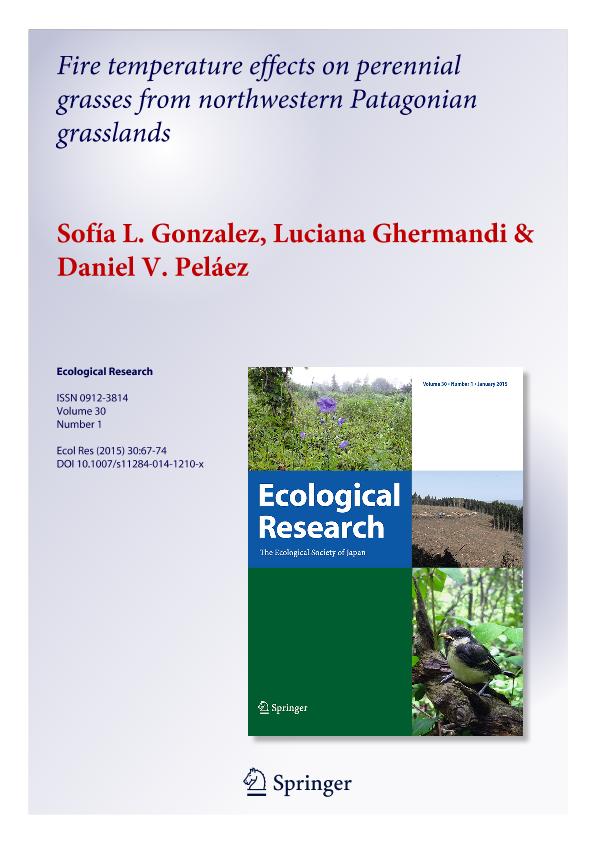Artículo
Fire temperature effects on perennial grasses from northwestern Patagonian grasslands
Fecha de publicación:
01/2015
Editorial:
Springer Tokyo
Revista:
Ecological Research
ISSN:
0912-3814
e-ISSN:
1440-1703
Idioma:
Inglés
Tipo de recurso:
Artículo publicado
Clasificación temática:
Resumen
Post-fire recovery of perennial plants depends on their capacity to regrow from surviving meristems. Plants are adapted to a particular fire regime, which can be altered by human activities and climatic change. Therefore, predicting the impact of changing fire regimes on post-fire vegetation recovery has become a major ecological concern. We studied the effects of fire temperature on survival and growth of the dominant tussock grasses Festuca pallescens and Pappostipa speciosa for two post-fire growing seasons in NW Patagonian grasslands. Using a portable propane burner, we applied two fire temperature treatments to individual plants: 200–500 °C (low temperature) and 500–900 °C (high temperature). Plant mortality was higher in F. pallescens than in P. speciosa, possibly due to morphological differences. Fire damaged active meristems in both species, which delayed emergence of new tillers. This in turn affected leaf length of tillers, which was lower in burned plants during the first growing season. Despite this, growth rate was higher in burned plants once they regrow only during the first growing season. In summer, post-fire hot and dry conditions affected F. pallescens survival. Although fire temperature affected negatively F. pallescens survival, both tussock grasses recovered quickly after the experimental burns. This response could favour their persistence and dominance in the community. Our study increases understanding of post-fire responses in grasslands and will provide important rangeland management information for grasslands in Patagonia.
Palabras clave:
Climate Change
,
Fire Intensity
,
Fire Regime
,
Tussock Grasses
Archivos asociados
Licencia
Identificadores
Colecciones
Articulos(INIBIOMA)
Articulos de INST. DE INVEST.EN BIODIVERSIDAD Y MEDIOAMBIENTE
Articulos de INST. DE INVEST.EN BIODIVERSIDAD Y MEDIOAMBIENTE
Citación
Gonzalez, Sofia Laura; Ghermandi, Luciana; Pelaez, Daniel V.; Fire temperature effects on perennial grasses from northwestern Patagonian grasslands; Springer Tokyo; Ecological Research; 30; 1; 1-2015; 67-74
Compartir
Altmétricas




